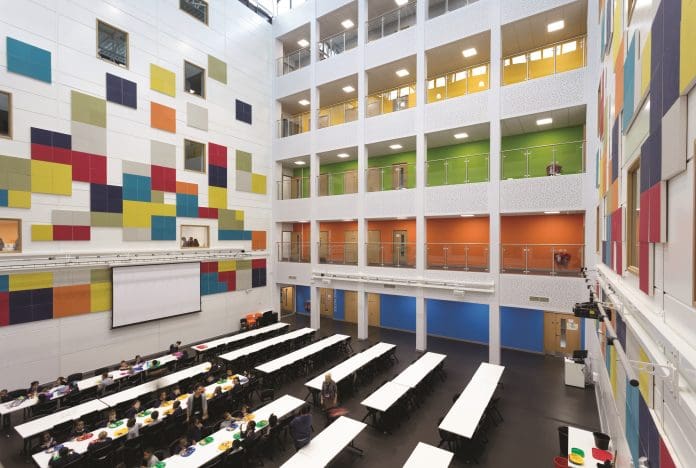With the recent focus on unsafe and aging school buildings compounded by the RAAC issue, Jackie Maginnis, chief executive of the Modular and Portable Building Association, discusses how a volumetric approach to construction can help remedy the situation and fast-track the school building programme
UK schools are facing yet another unprecedented challenge. As teachers and education leaders fight to get learning back on track, their efforts are now hampered by unsafe structures and a severe lack of alternative learning environments. In the latest list published by the Department of Education (DfE), 174 schools have already been identified as affected by the use of dangerous reinforced autoclaved aerated concrete (RAAC) in their buildings.
RAAC is a lightweight material that is a cheaper alternative to standard concrete but was found to be less durable and with a shorter life span. Some affected schools are having to move to remote learning, and others having to change the way they operate to avoid certain areas.
700,000 attend unsafe school buildings
Back in January 2020, the Department for Education (DfE) launched the £3bn offsite framework, also known as MMC1. The NAO reported in June 2023 that an estimated 700,000 children are being taught in aging or unsafe school buildings in England and that the deteriorating condition of school buildings is damaging pupil attainment and teacher retention.
We need a fast-track approach to get this 10-year programme back on track. Without a doubt, this is a massive undertaking, but by using innovative construction methods – it is not unsurmountable.
As an early adopter of modern methods of construction (MMC), after the war, the government used latent munitions factory capacity to cope with a rapid increase in the need for education buildings as a result of the post-war baby boom. This was very much the development ground for MMC – backed by thinking way ahead of its time.
Government support has resulted in a significant pipeline of work which has generated more investment and innovation in the volumetric modular sector – advancing the technology and increasing manufacturing capacity. MMC1, together with the requirement to achieve at least 70% Pre-Manufactured Value (PMV), is a driving force in the specification of volumetric technology in public sector projects – particularly in the education sector.
As the name suggests, PMV is the financial proportion of a project’s gross construction cost derived through pre-manufacturing. It is a core metric for measuring the level of MMC in a project and is central to the UK government’s procurement programme. Contractors are required to show that pre-manufacturing will account for at least 70% of all construction costs. This essentially plays to the strengths of a volumetric modular approach.
Delivering productivity gains and enhancing quality
Increasing productivity is crucial to success. We have the technology, capabilities, and capacity, so how can this be achieved? By taking the building process ‘offsite’ into quality-controlled manufacturing environments simultaneously, ground and foundation works can be carried out onsite. This approach not only delivers productivity gains but enhances the quality of the final output. Modular construction is a highly organised and streamlined process that can see construction project times reduced by 50% – 60%.
Bringing a manufacturing mindset to the design and construction of school buildings – with volumetric manufactured buildings, all construction data can be validated and coordinated as part of a structured process, which helps provide accurate and reliable information for clients at the point of handover. Volumetric construction helps ensure client satisfaction and offers product assurances through the certainty and quality embedded into the manufacturing process.
Providing a predictable pathway for education builds, the benefits of volumetric manufactured buildings begin in the factory, continue to the construction site, and last through the lifetime of the building.
About MPBA
The Modular and Portable Building Association plays a key role in supporting all sections of the industry. Leading best practice principles, the association is represented on many committees for the benefit of members.
Most importantly, the MPBA ensures evolving government policies and decisions are not made on behalf of the construction industry without due consideration for the impact they may have on the volumetric modular sector. Regardless of the size and type of your business, becoming an MPBA member will open doors to valuable business development, training, and collaboration opportunities.

















